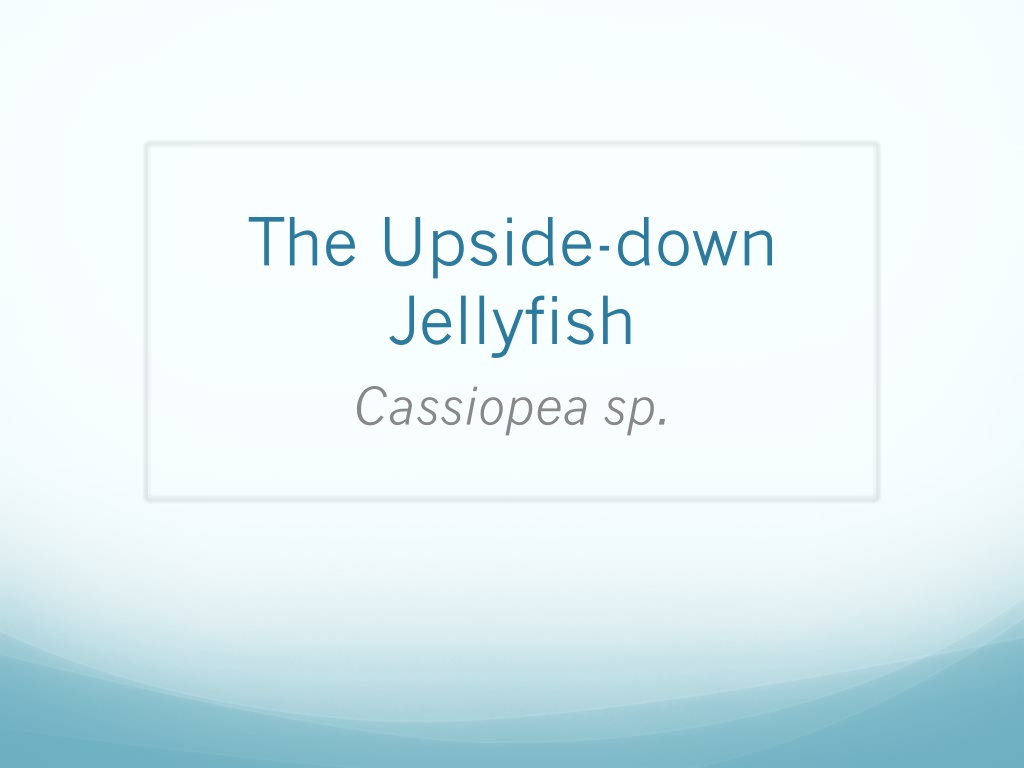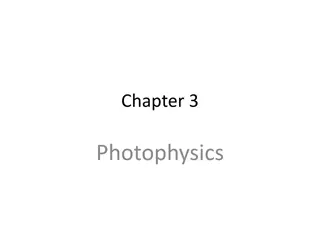The Fascinating Upside-Down Jellyfish: Cassiopea sp.
Exploring the unique characteristics of the upside-down jellyfish, Cassiopea sp., which belongs to the order Rhizostomeae within the class Scyphozoa. Often found in mangroves, these jellyfish exhibit a distinctive appearance resembling sea anemones. Despite their atypical traits for a Scyphozoan jellyfish, they thrive using stinging cells to hunt for food. Their symbiotic relationship with zooxanthellae provides vital nutrition, showcasing their remarkable adaptation strategies for survival.
Uploaded on Sep 15, 2024 | 0 Views
Download Presentation

Please find below an Image/Link to download the presentation.
The content on the website is provided AS IS for your information and personal use only. It may not be sold, licensed, or shared on other websites without obtaining consent from the author. Download presentation by click this link. If you encounter any issues during the download, it is possible that the publisher has removed the file from their server.
E N D
Presentation Transcript
The Upside-down Jellyfish Cassiopea sp.
Phylum Cnideria Class Scyphozoa The upside-down jellyfish belongs to order Scyphozoa, the true jellyfish . As most Scyphozoan jellyfish do, the upside-down jellyfish has two life phases: the medusa form and the bottom-dwelling polyp form. Scyphozoans exhibit both asexual and sexual reproduction; usually asexual as a polyp through budding or strobilation, and sexual as a medusa with gametes.
Order Rhizostomeae The upside-down jellyfish belongs to order Rhizostomeae. The jellyfish in this order, unlike others in Class Scyphozoa, have no tentacles of structures on the edges of their bell, but have 4 to 8 highly branched oral arms. It is also common for the organisms in this order to have multiple mouths, one primary and many secondary, often distributed all along the oral arms.
Common Name The common name for Cassiopea sp., the Upside- down jellyfish, comes from their tendencies to settle upside-down on the ocean floor in shallow, muddy water. They are also sometimes called Mangrove jellyfish because they are often found in mangroves.
The upside-down jellyfish doesn t look like a typical Scyphozoan jellyfish, but more like an Anthozoan, like a sea anemone. This appearance is beneficial to the jellyfishes survival.
Like most jellyfish, the upside-down jellyfish hunts for food and wards off predators using stinging cells (nematocysts). These nematocysts are used to feed on plankton and zooplankton. The upside- down jellyfish release their stinging cells in a layer of mucus that floats in the water. Their sting is not harmful to humans but can cause an itchy rash.
These jellyfish also have multiple mouths. They have a primary mouth and then many secondary mouths (up to 40) located on their arms to quickly capture and eat food. The upside-down jellyfish is a filter feeder and they use pulsations of their bell to bring in planktonic food.
In addition to their nematocysts, the upside-down jellyfish gets most of its nutrition from its symbiotic relationship with photosynthesizing zooxanthellae that are housed in the bell of the jellyfish. This is why these jellyfish spend their time upside-down on the bottom of the ocean soaking up sunlight for their photosynthesizing golden algae. They aren t born with the symbiotic algae, but rather they acquire it infectiously.
Life Cycle Sexual Reproduction: The upside-down jellyfish starts its life out as a free swimming planula larvae, which they remain until they are about 2 cm. Then they invert their bell and land upside-down on the ocean floor in shallow water. Like most jellyfish, they alternate between polyp and medusa stages. In the polyp stage new jellyfish can be produced asexually through budding and strobilation.
The upside-down jellyfish share a relationship with a family of crabs called Dorippidae. The crabs will put the jellyfish onto their back and carry it around for protection from predators although the jellyfish doesn t seem to get anything out of it.
Phylum Cnideria Class Hydrozoa Some Hydrozoans are solitary and some are colonial. Colonial Hydrozoans can get to be very large and sometimes the specialized individuals in the colony cannot survive outside of the colony. The Portuguese man of war (Physalia physalis) is an example of a colonial Hydrozoan
Order Siphonophorae The Portuguese man-of-war belongs to Order Siphonophorae. Siphonophores are colonial Hydrozoans and are generally long, thin, transparent pelagic floaters. Some Siphonophores, like the Portuguese man-of-war, resemble Scyphozoan jellyfish. Each zooid that makes up the organism is an individual, but they are so strongly integrated that they cannot live on their own. Some Siphonophores can emit light
Physalia Physalis Portuguese man-of-war The Portuguese man of war lives at the surface of the ocean. They float using their gas-filled pneumatophore and the remainder of the organism is submerged. Portuguese man of war are composed of four different types of polyp. The pneumatophore Dactylozooid (stinging/feeding) Gonozooid (reproductive) Gastrozooid (feeding) Portuguese man of war are usually found in more tropical waters


























